
10 minute read
The Halloween Ford
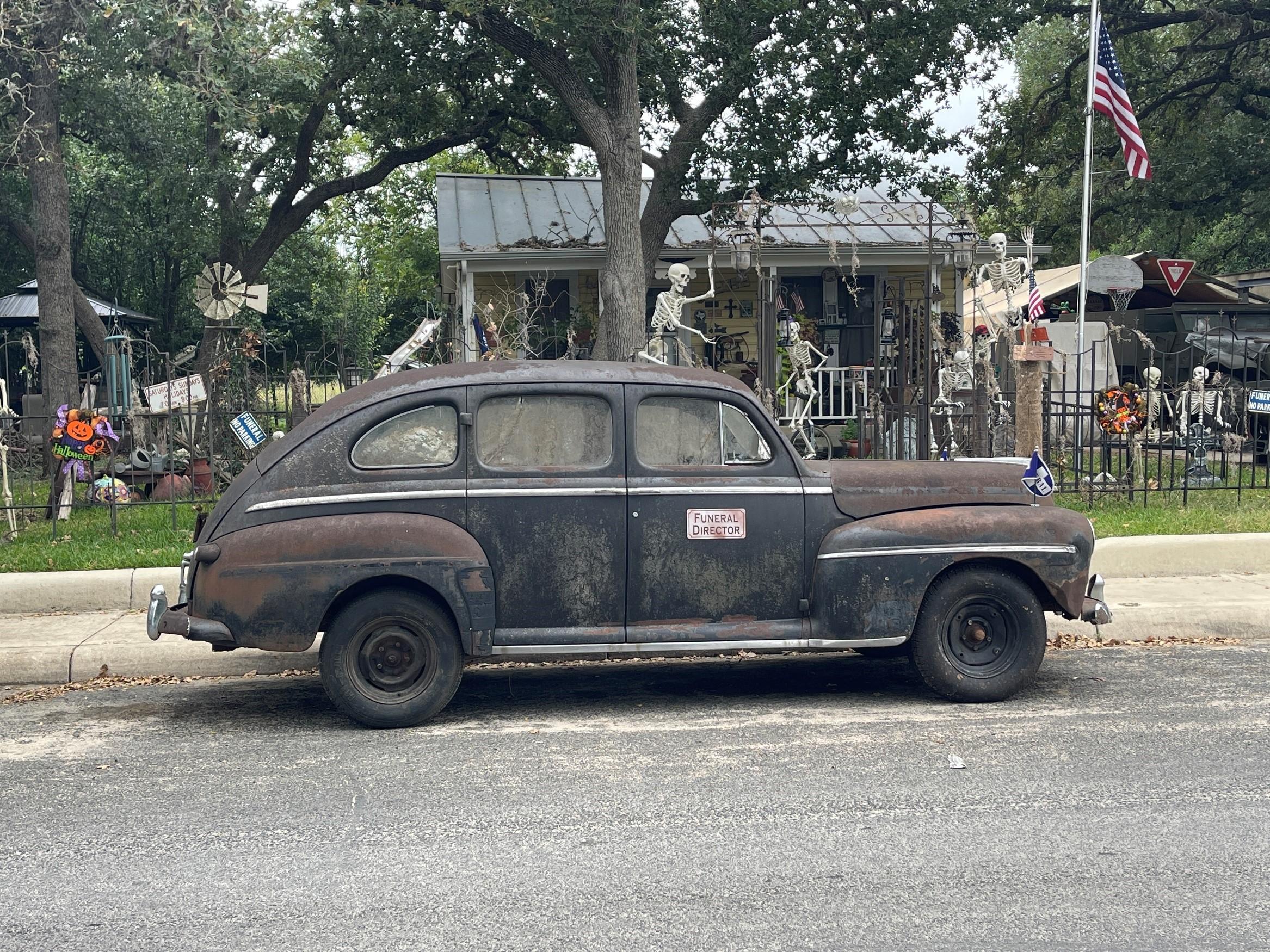
By Timothy Smith
With the Ford in its present condition and circumstances being what they are, how could I not add it to my Halloween display?!
Long experience has taught me that people are fascinated with their own mortality. It is something we rarely give much thought to. To have a focused glimpse at what was and the effect that the passage of time has upon it certainly reminds us that there will be a time when we too will be gone and the rest of the world will simply go on without us.
From the day we are born, to the day we die, our view and our perceptions of the world always incorporates our own sense of self. To be cleverly tricked into considering a world without us in it is to conjure a very strange feeling indeed. These are the things that draw our rapt attention, fuel our imagination and occasionally give us a shiver, particularly around Halloween.
My annual Halloween display has been created over a long period of time and it is still growing. Many years of minor investments in time (and all things considered, surprisingly little money) has come together to allow me to create what you see here. I make a great effort to buy the new things on sale, or find them used. The money saved allows me to invest a little bit more in lighting which, in my
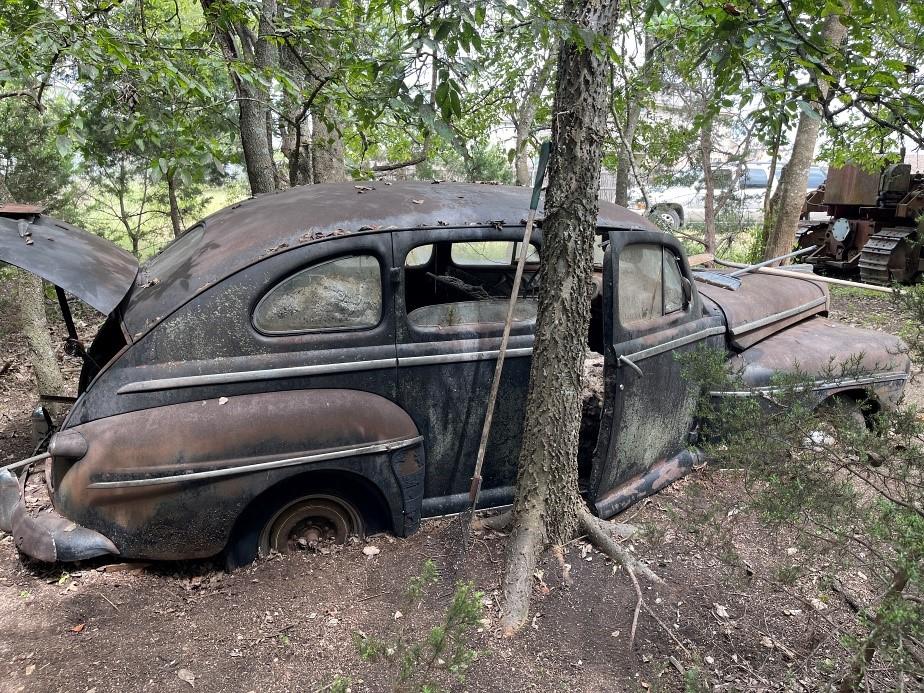
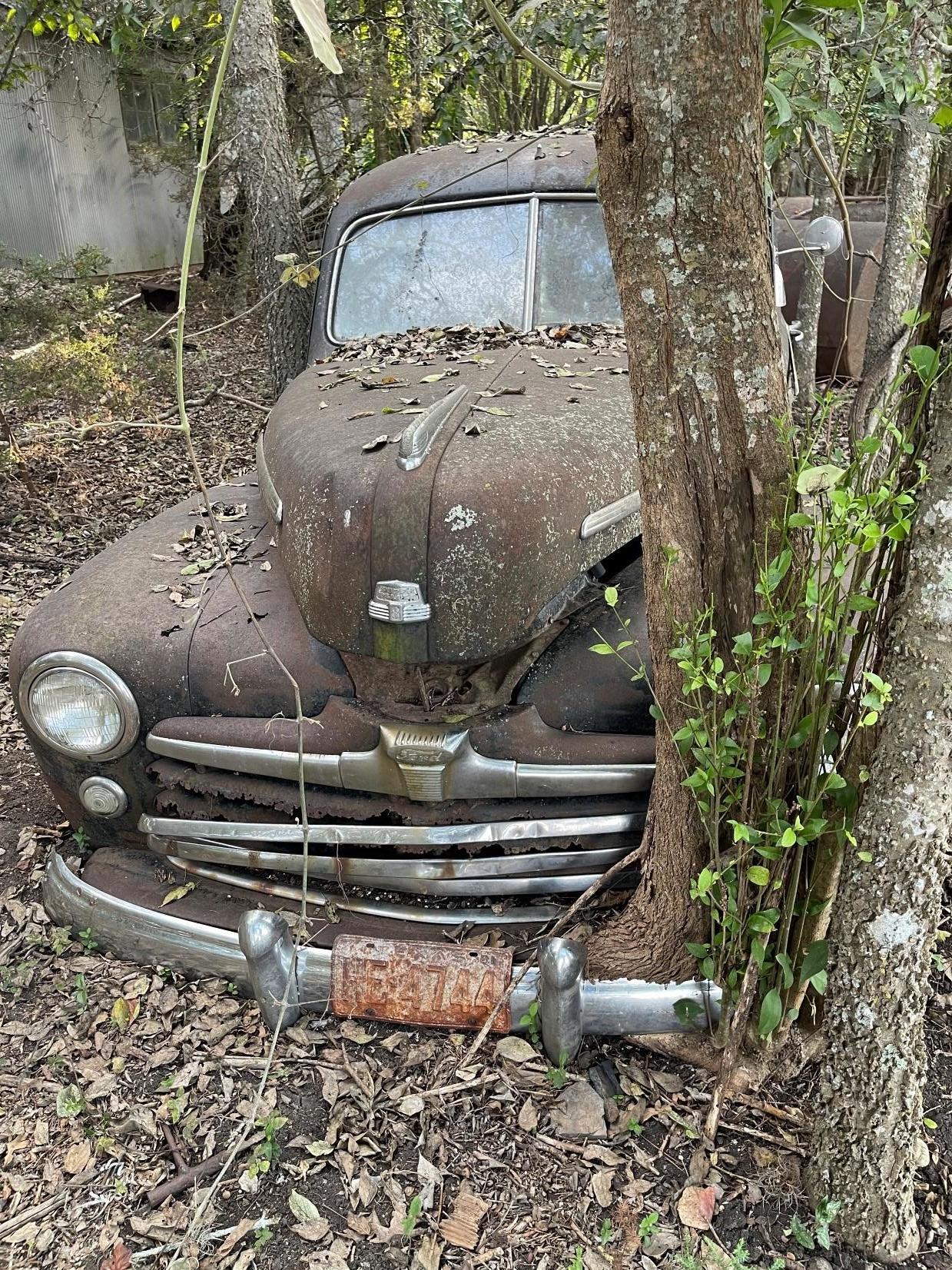
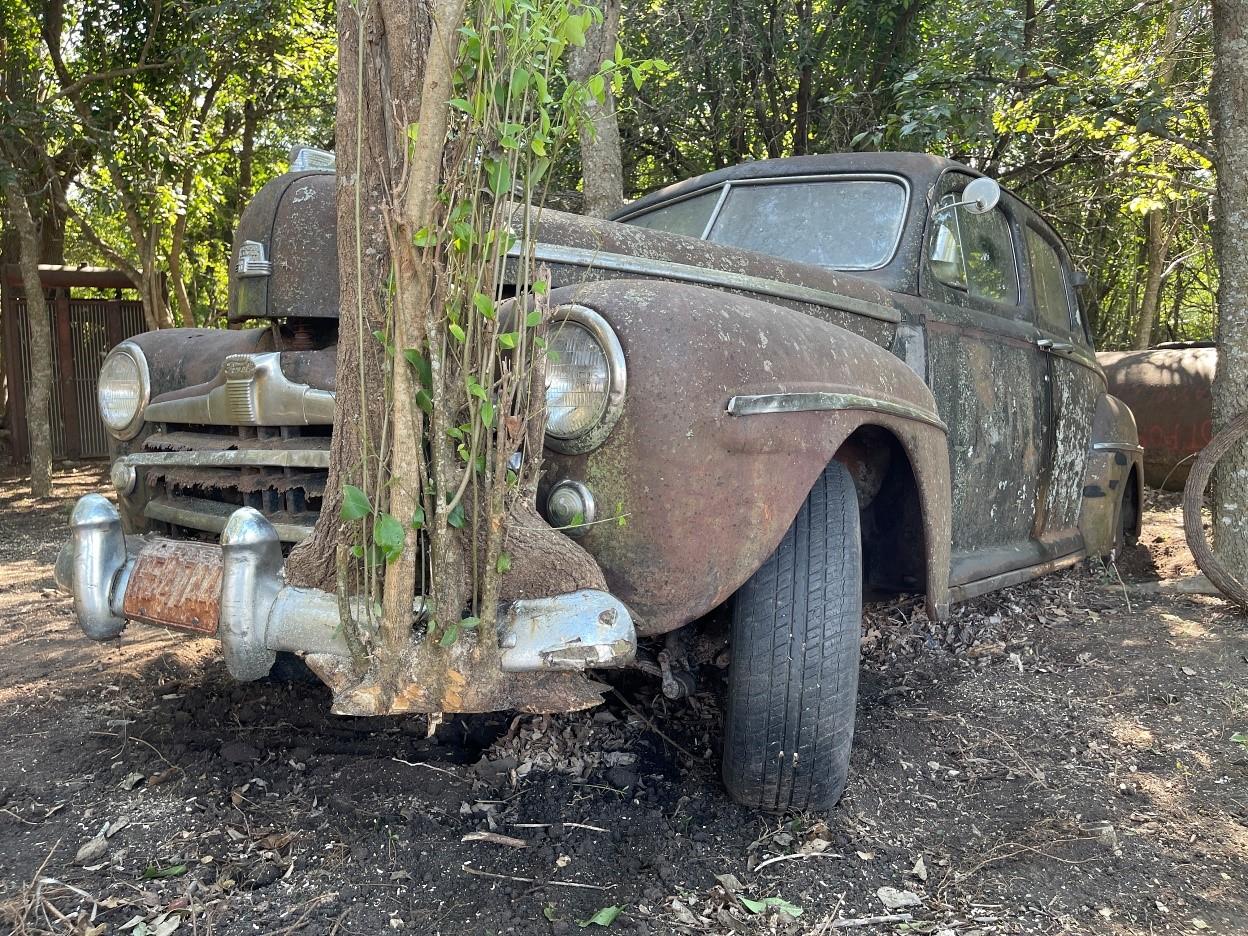
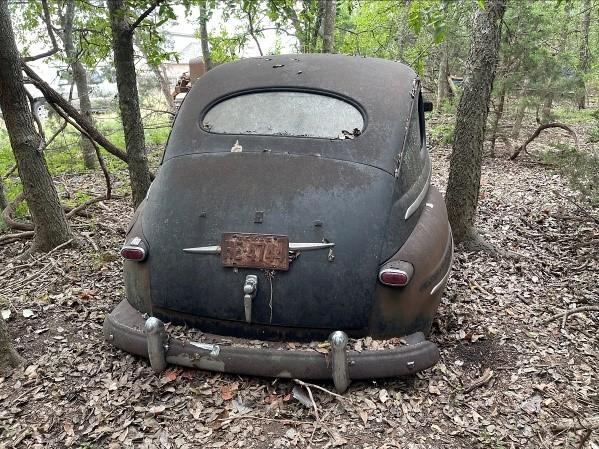
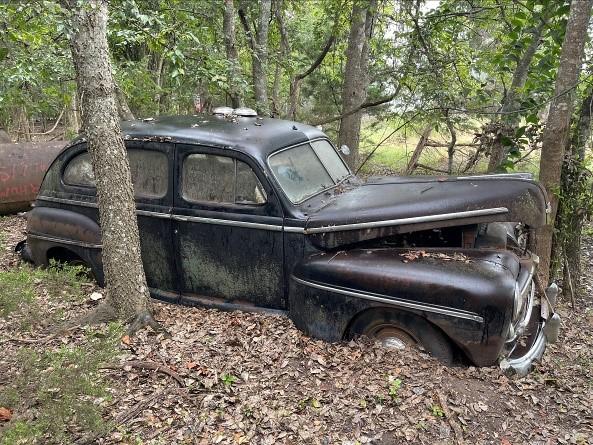
humble opinion, is one of the most critical things in any really good display or effect.
Many things are made right here at home. By way of example, the fence, the gates, all the perimeter stuff began its life as gazebos....and yes, there is more fence on the way. I just didn't get around to it this season, chiefly because I was too busy dragging the ‘47 out of its grave. So, there will be even more fence next year. The fence is also wholly temporary.
Specially modified T-posts support the fence's terminal posts from the inside, providing an appearance of permanence to the fence. It takes about an hour to put up and about 15 minutes to take it all down.
Notionally, my cemetery is one where the dead rise from their graves and resume doing what they did in life. Having the 1947 Funeral Director's car out front seemed a natural extension of that. And, if by chance the Funeral Directors are ALSO dead, who is actually left to run the show?
So many good things came together to make it all work.
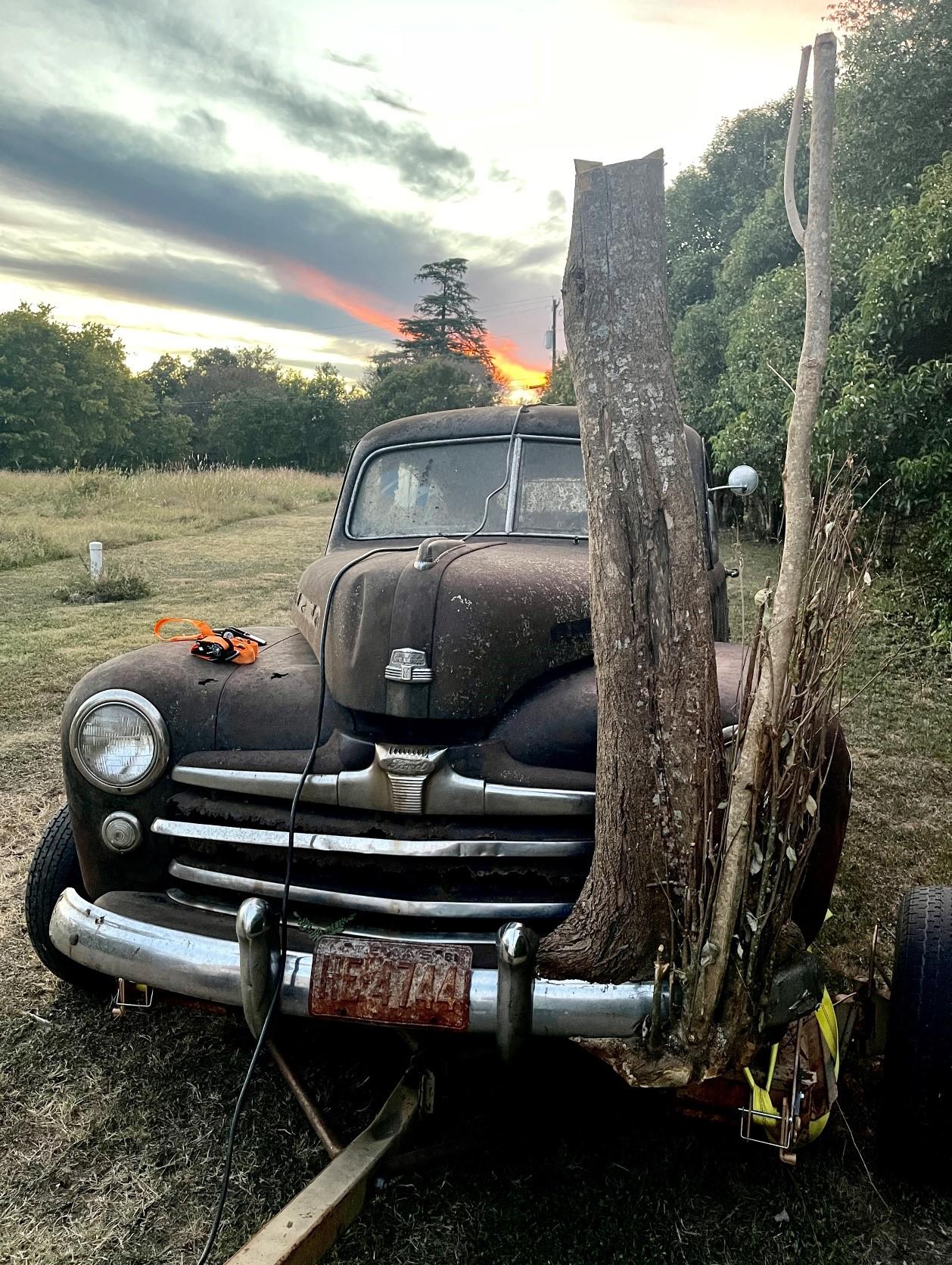
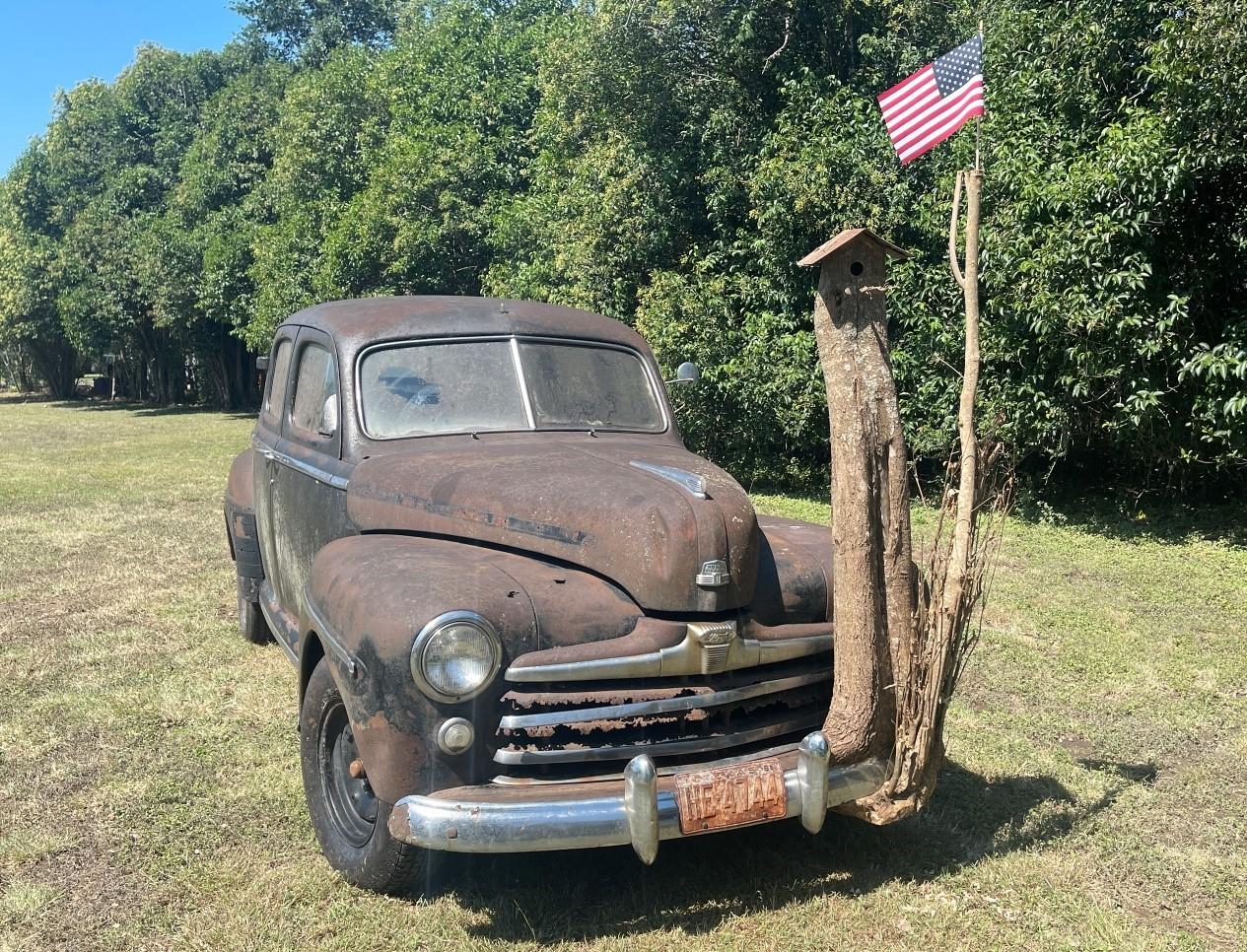
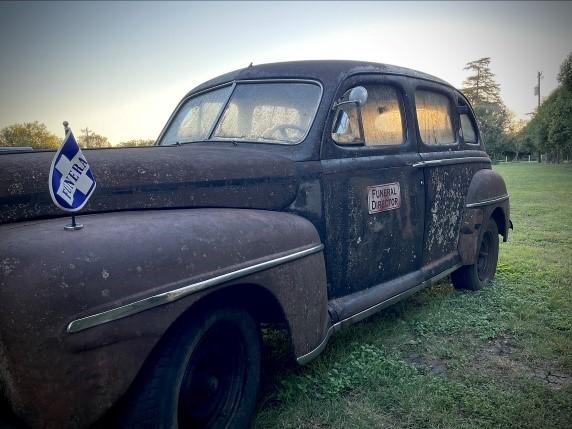
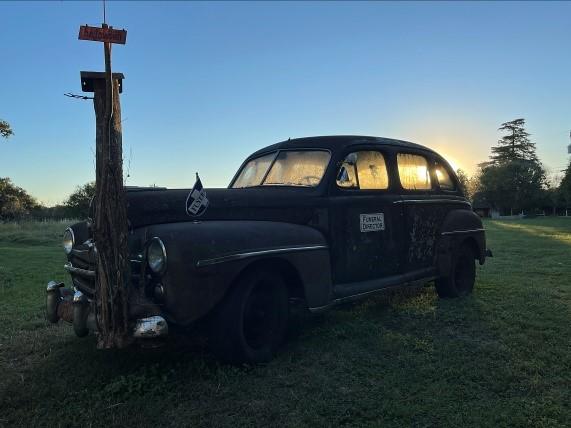
Timing was certainly of great importance. The car came home around the beginning of the month. One of the most important decisions I made, was to keep the car looking as decrepit as possible which, during its recovery, was sometimes difficult.
Some of the trim would actually fall off, as the badly decomposed spring clips holding it gave way while we were moving the car. Just a little bump or two and off it came. Hilarious! We collected it all, of course. I think we may still actually have a complete set of trim for this car, because we made the effort to find it all. Perhaps the car looks even worse without all of it in place.
In this way, the outwardly poor condition of the car speaks to us about the passage of time. I think this famous epitaph says it all - "What I am now, so shall thou be."
To complete the effect, I would have loved to put the original wheels and tires back on it, flats and all, but I reckoned that would be pushing it. After all, Code Compliance officials are a bit sensitive about that kind of thing.
V-8 TIMES MAGAZINE
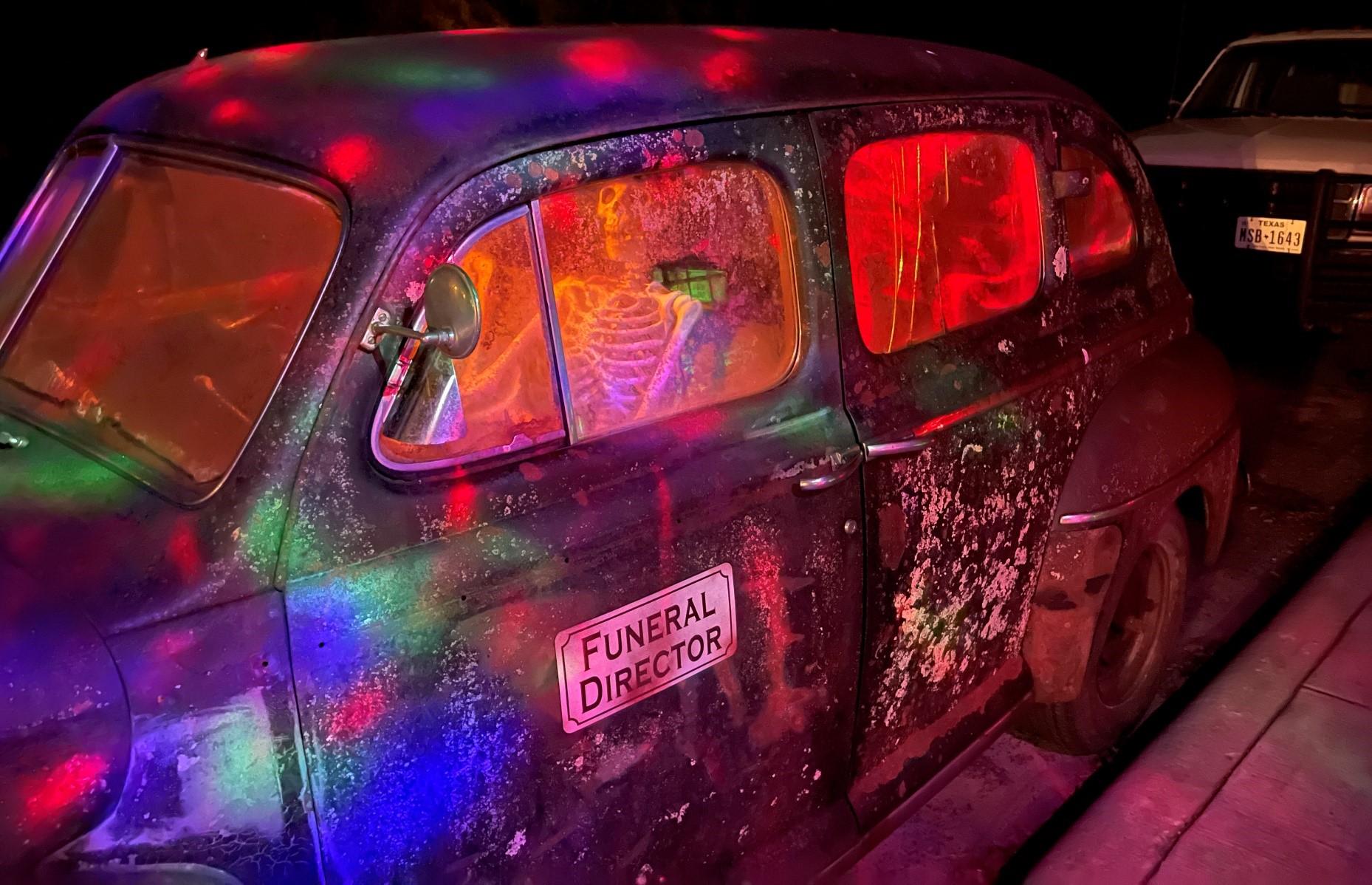
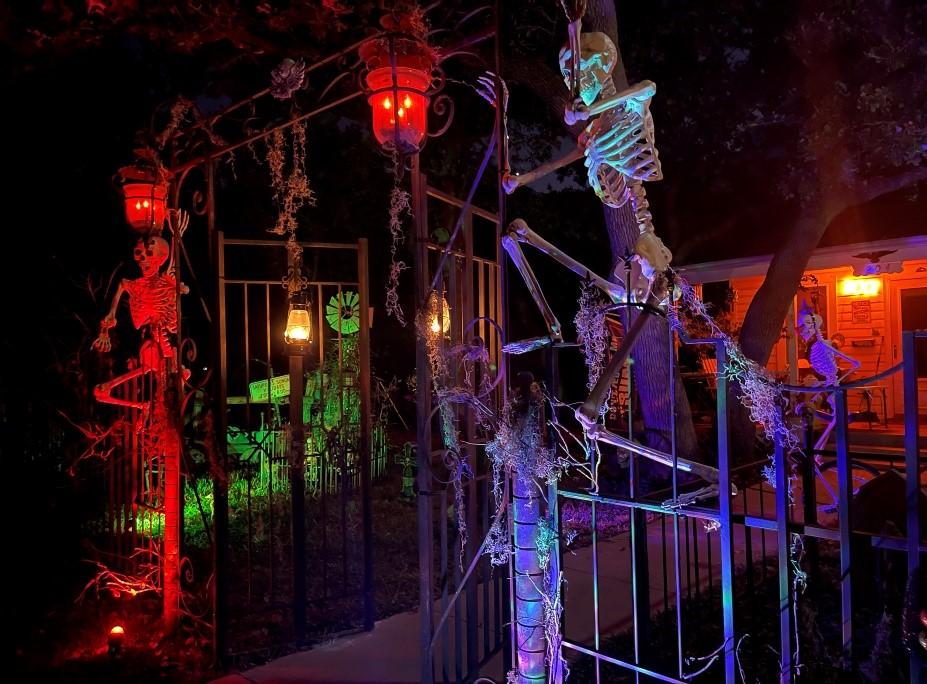
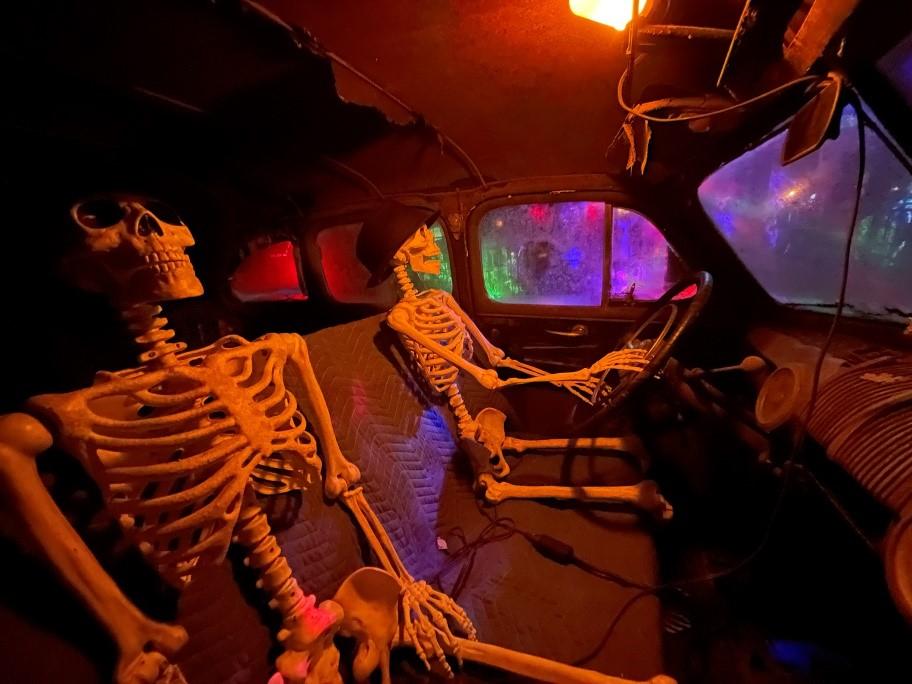
As a sidebar; in the early 1980s, I was deeply involved in the running of what I believe to be one of the most widely recognized haunted houses in the country and that would be the Jaycee's haunted house in Fremont, Ohio. We drew visitors from every state, contiguous to Ohio and occasionally a few states even further away.
If you don't know about it, just check google images for Fremont Haunted House. I think you'll be stunned. The architecture is (was) Second Empire and it was a wonderful place, completely suited to its use as a Haunted House venue. Alas, it was lost to a fire and eventually demolished entirely.
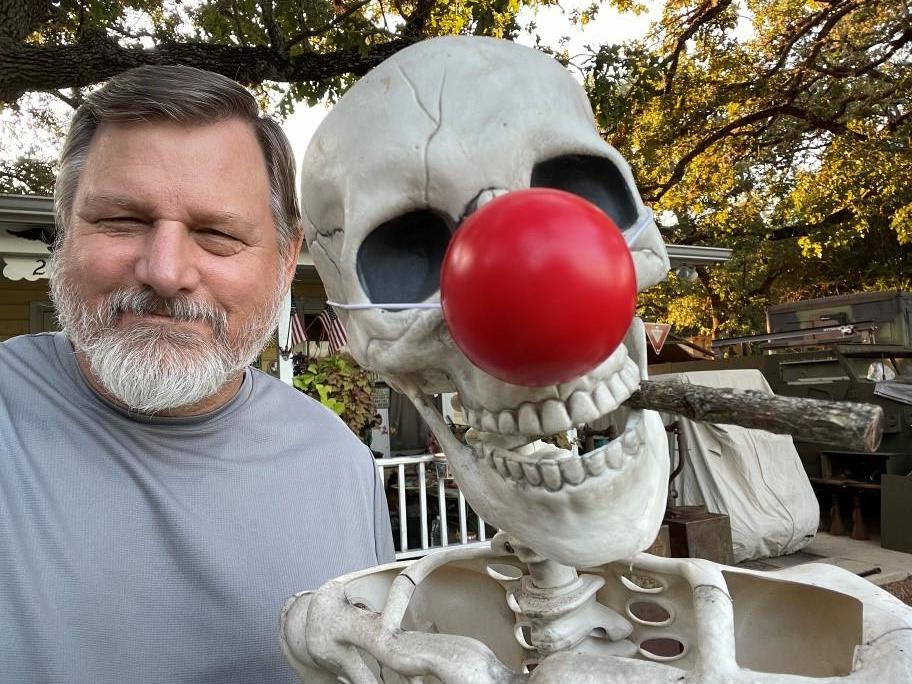
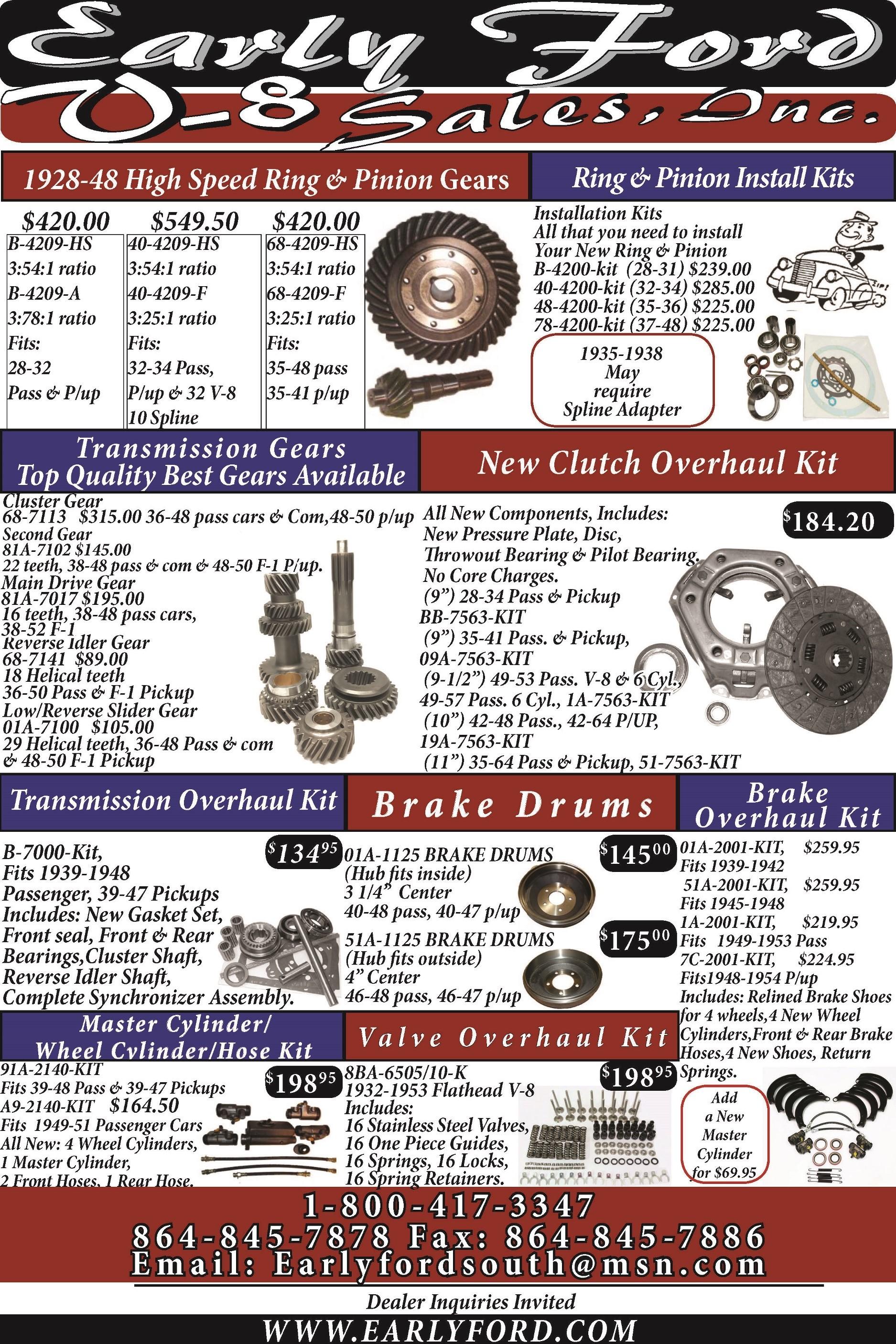




By “Mercury Ed” Suchorski servantofthelord9-13-09@hotmail.com ● 262-895-6128
FOUND!
32 OF THE 33 SPORTSMAN BODIES FOUND!
At long-long last, for 50 years, since 1971, 33 Sportsman bodies have been unaccounted for (in the assembly production charts on pages 48 and 49 of the Seventy-One Society newsletter). Of the total of 3,725 that were made/produced in the Iron Mountain, Upper Michigan plant. Former employees talked to in 1970, (correct spelling with only one “e” in the ‘40s), generally thought that some were unused, used as replacements, or simply rejected by quality control. All good ideals. I’d like to report that they were found still crated up, ready for export, in some abandoned warehouse, or in another country, but sadly, that is not the case.
Dr. John Mansell (who passed away in 2015-with 160 convertibles) did an exhaustive search into the Ford Archives in the late ‘60s and early ‘70s, combing through all of the daily production reports of two calendar years (the 24 months of 1946 and 1947), of all of the 14 assembly plants. He charted out and kept track of every Sportsman he found assembled. I had all intent and purpose to start from scratch and go over every thing he did, to see if I could come up with some more numbers that he might have missed.
Dr. Tom Garrett even contacted Ford of Canada to see if they had any, However, no Sportsman bodies were ever shipped to Canada for assembly to a rolling chassis, a
front clip and a hood. But he was on the right track! 32 Sportsman bodies WERE, shipped from Iron Mountain to the Mexico City plant. Now these were not exports. There were a handful of complete cars exported to other countries, but not to Mexico City.
In my pursuit, since 2016, of all things 1942 (because 1942s were assembled for 50 months, up until October of 1945, mostly in Sao Paula, Brazil), quite by accident I found a listing put together by the BFRC librarian, Kathy, of an obscure ascension of three folders. The folders contained the negative-print production reports from all of the foreign assembly plants. This was for the calendar years of 1945, 1946 and 1947. These are commonly available for the 1930s up to 1945, in various other accensions. This is a breakdown by every body type, of every month, of every foreign assembly plant, with monthly running totals. This was pretty much untouched, unopened stacks of spread-sheet chart reports. About 10 pages for each month were still all stapled together and the 12 monthly stacks all piled/bound on top of each other, onto 2-prong metal bendable blade fasteners.
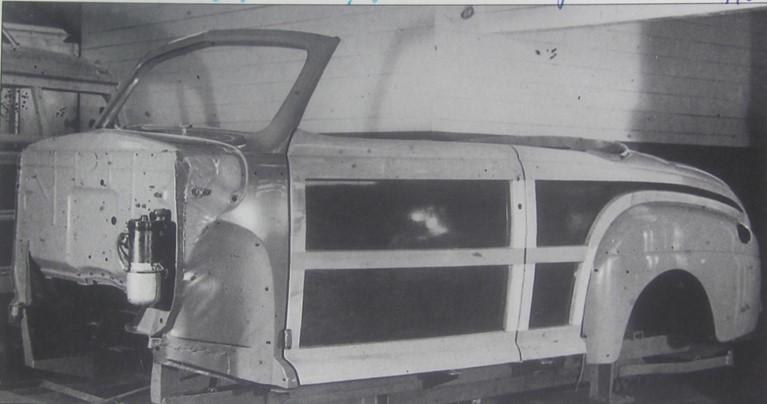
From the Ford Archives. This photo was taken just after the wood was fit and attached to the Murray Corp. built, skeletal-framework, cowl, floor and inner fender unit. Note the holes in the rear fender for the gravel guard and Ford fender trim. This, and the “A” type wood make it an August 1946-on Sportsman. At this point, the body number has yet to be hand stamped into the cowl. Its next stop is the trim department for all of the hardware, trim, windshield, dashboard, seats, complete interior and top components. Also note the fresh station wagon on a rolling body cradle just to the right.
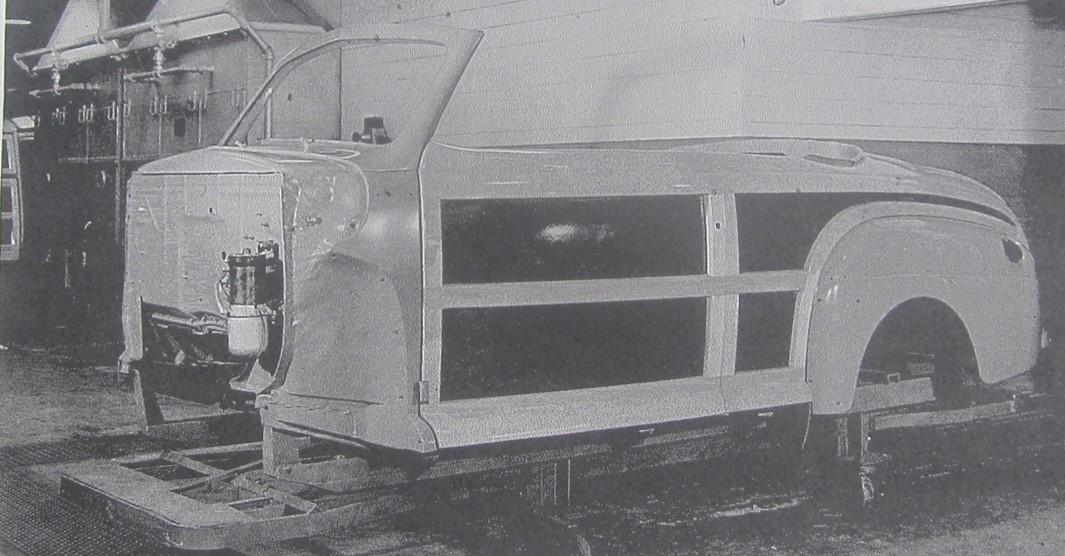
This photo is from the Brad and Barbara Smith Collection of the same car at a slightly different angle..
So, these production reports were basically never seen by anyone!
Since there are complete Sportsman units exported in calendar year 1947, I often wondered why. Why wasn’t there any Sportsman cars exported in 1946? Well there were! In the December 1946, foreign year end totals, it lists 31 units exported (but not to what country). When I first saw this, I thought, well here we have 31 of the missing 33 bodies! But then I found the number of Sportsmans month by month assembled in 1947, in the Mexico City plant. And this was 32 of the 33 missing! Mexico City assembled Sportsmans from April of 1947 to and including October 1947. This would not have been uncommon as you might think, as the Iron Mountain plant had been shipping completed station wagon bodies to Mexico City, even before the war and now after.
Another bonus is, for the first time ever, Canada is included in the foreign listings reports. Before the war, Canada was always just an added line by itself, on the domestic production sheets. You had all the domestic plants production, listed by each body type, then the lines of all of the different foreign plants production, and finally, three more lines. One of Canada, one for the Lincoln plant and one line for farm-tractor production. But this spread sheet covers complete in-depth, all the lines of Ford DeLuxe, Ford Super DeLuxe, Mercury Dlx 114, Mercury Sup Dlx 114X, Mercury 118, Monarch 118, Ford trucks, and Mercury trucks (this will be the basis for an upcoming article on Canada production for 1946 and 1947).
Speculation now is, was the first prototype Sportsman completed in October 1945, which was given to Ella Raines on December 25, 1945, included, in the total of 3,725 bodies listed in the 1948 body parts catalog? Were the first production Sportsmans in March 1946 numbered 2, 3 and 4? Or was it number 1, 2 and 3? Generally speaking, prototype-vehicles were not included in production, totals. And that holds true in the October 1945 production reports. No Sportsmans listed, but there was only one rolling Open Drive Front End chassis assembled in October – which is a rolling chassis, front clip, hood, and cowl unit. Could this have been for the Sportsman prototype? Also, one could speculate that Mexico City may have had one more Sportsman body, that might have not been assembled until after January 1, 1948? As where, 1948 records are still yet to be found.
And so, in 1946, fourteen Ford Sportsmans were exported and get this, seventeen Mercurys were exported! This makes Mercurys here, even rarer yet! Although there were columns for Sportsmans in the 1946 records, none were recorded there, as being assembled in foreign countries.
Well there you have it. Most of the 50-year-old mystery solved. Friends of mine have dubbed me an “Olde Car Detective!” Which I have quietly/politely accepted that title.










